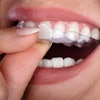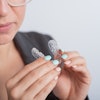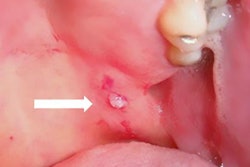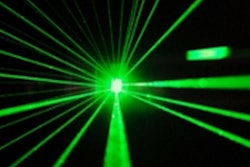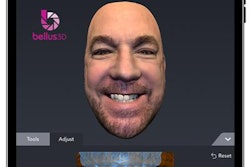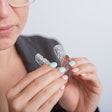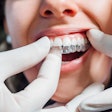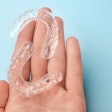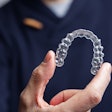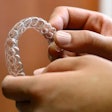
The use of low-level laser therapy (LLLT) shows promise for accelerating orthodontic tooth movement (OTM) and reducing the associated pain. Researchers conducted a randomized clinical trial to investigate the effects of one such type of low-level laser, a diode laser, on these factors.
Results of this treatment are not well understood, the study authors explained. To learn more, the researchers treated 41 patients on one side of their mouth with both orthodontic traction and a diode laser and with orthodontic traction only on the other side, and they found significant differences between them, the study authors reported in the journal Materials (July 8, 2019).
The first upper premolars of the study participants (mean age, 13.4 years) were extracted as part of their orthodontic treatment, followed by distalization of 82 maxillary canines. To achieve space closure, they underwent treatment with a nickel-titanium closed coil spring (G & H Orthodontics) with a force of 50 newtons (N) on each side.
Under the study's randomized, split-mouth design, the investigators treated study participants with a diode laser (Wiser Laser, Doctor Smile) on the test side only at 810-nanometer (nm) wavelength in continuous wave mode at both the buccal and palatal sides on three points per side (distal, medial, and mesial) at baseline and then at days 3, 7, and 14. Treatment continued every 15 days until the space closed.
The researchers found that the mean space closure of the maxillary canines was similar between the treatment groups, although mean time to achieving space closure was significantly faster in the laser group (84.35 days) compared with the control group (97.49 days).
Additionally, average pain levels because of the orthodontic traction measured using the visual analog scale were significantly and consistently lower on the side treated with the laser (see table below).
| Average pain levels measured on visual analog pain scale | ||
| Treatment day | Nonlaser-treated side | Laser-treated side |
| Day 3 | 7.23 | 5.41 |
| Day 7 | 5.79 | 4.12 |
| Day 14 | 3.84 | 2.31 |
The authors noted some study limitations, such as a lack of blinding in the participants, particularly regarding pain experience, and a follow-up period of only two months.
While further research is needed, low-level laser therapy is a promising treatment for accelerating orthodontic tooth movement, they concluded.
"The results of the present study suggest the positive effects of LLLT by means of diode laser for accelerating OTM and for reducing dental pain linked to OTM," wrote the authors, led by Gaetano Isola, DDS, PhD, of the department of general surgery and surgical-medical specialties at the University of Catania in Italy.
